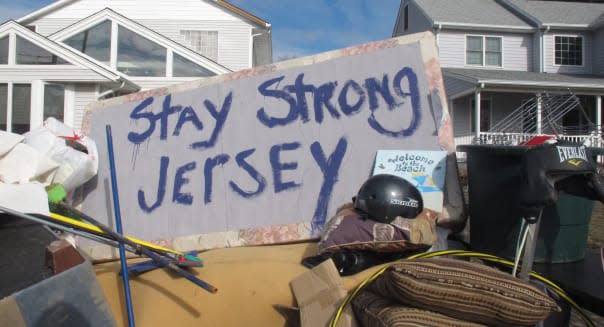Hurricane Sandy, One Year Later: Following the Recovery Money

NJSpotlight.com -- Hurricane Sandy was without a doubt the most destructive storm to hit New Jersey in modern times, causing dozens of deaths, damaging or destroying nearly 350,000 buildings, and leaving 7 million residents in the dark. Official estimates put statewide losses at around $37 billion, but one recent study speculated that once factors like loss of economic activity and tourism dollars, borrowing costs, infrastructure repairs, and storm mitigation are taken into account, the cost could rise billions or even tens of billions higher.
%VIRTUAL-article-sponsoredlinks%New Jersey's 127 miles of coastline contain billions of dollars of real estate, and they're the source of tens of thousands of seasonal jobs and a $19 billion tourism industry, so rebuilding the shore as quickly as possible was seen as an imperative by many residents and business owners. On the one hand, the Christie administration has done all it can to expedite that endeavor, waiving standard permitting processes and minimizing interference from Trenton. It has also opted to leave important rebuilding decisions up to local municipalities, despite complaints and warnings from environmentalists and planners who call for more regional-based, long-term planning that takes future storms into account. On the other hand, even with the hurry-up-and-build approach, the Jersey Shore still has a long way to go to get back to normal.
Assessing the state of the recovery one year later is hard to do. There are plenty of anecdotes from shore residents to go around, but it's hard to get a sense of the big picture. Building construction permit numbers don't really tell the story, since there's no way to separate figures of houses being rebuilt as a result of the storm from homes that would have been built anyway. And while vacant lots abound in places like Union Beach, there is no data available on a statewide level to indicate just how many people have yet to return to their homes. The Ocean County Planning Board did estimate recently, however, that it could be as high as 26,000 residences countywide.
There are certainly some promising signs. The administration has dedicated $300 million of FEMA money to offering buyouts of 1,000 flood-prone homes damaged by Sandy in tidal areas throughout the state, as well as another 300 that have repeatedly flooded in the Passaic River Basin. The first two deals were inked last week in Sayreville, and dozens more closings are expected in the coming months.

